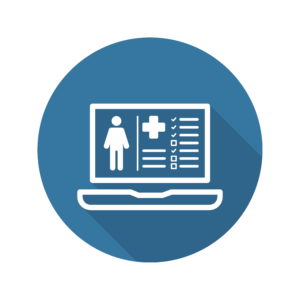The life insurance physical exam is a critical step in securing a life insurance policy, designed to assess an applicant’s health and risk factors comprehensively. This exam influences the underwriting process and the policy’s premiums. Preparing adequately for this examination is essential, as it involves a series of measurements and tests, including blood work and a urine sample, aimed at providing a detailed snapshot of your health. By following expert tips and understanding the exam’s components, you can significantly improve your chances of achieving favorable results.
Table of Contents
Key Takeaways
- Preparation for the Exam: It’s crucial to properly prepare for the life insurance paramedical exam to ensure the best possible results. This includes getting a good night’s sleep, fasting for 8 hours prior to the exam, and avoiding supplements, alcohol, and high-sugar foods.
- Scheduling the Paramedical Exam: The exam can be scheduled at a convenient location, such as your home or workplace, to ensure you’re in a relaxed state. The choice of location can impact your comfort and, potentially, your exam results.
- Personal Information Requirement: The application process requires detailed personal information, including social security number, marriage status, and, for non-US residents, legal status documentation.
- Exam Process: The paramedical exam includes measurements like height, weight, blood pressure, and pulse, as well as a blood draw and urine sample. Being calm and hydrated can help improve the results.
- Underwriting Process: After the exam, there’s a waiting period as the labs are analyzed. The underwriting process may also include additional questions and, in some cases, require attending physician statements (APS) for more detailed health information.
- Approval and Policy Review: Once approved, review your policy thoroughly to ensure it includes all expected features and riders. Your health rate class, which affects your premiums, will be assigned based on the exam results and underwriting.
- Health and Lifestyle Impact: Your health, lifestyle, and even family medical history can significantly impact your policy’s terms and premiums. It’s essential to disclose all relevant information accurately during the application process.
- Specific Tests and Their Importance: The life insurance exam tests for a range of health indicators, including blood chemistries, cardiac risk factors, and urinalysis, to assess your overall health and identify any potential risks.
- Drug Testing: Life insurance companies test for nicotine and other substances. Usage can affect policy terms and classifications, particularly regarding tobacco use.
- Comprehensive Evaluation: The underwriting process involves a comprehensive evaluation of your health, lifestyle, driving record, and even credit history to assess risk and determine policy terms.
The Life Insurance Application Process
There are a few different types of policies available. Not all policies require a life insurance medical exam. However, if you want the best whole life insurance rates, a fully underwritten policy is your best option.
Simplified Issue: Simplified issue requires no exam. Instead, you will need to answer medical questions and questions about your lifestyle, such as if you use tobacco products.
Guaranteed Issue: Guaranteed issue, also known as guaranteed acceptance life insurance, does not require you take a life insurance physical exam or answer any health questions. The only requirement is that you are the required age and live in a state where the product is available.
Fully Underwritten
The typical steps in the application process for a fully underwritten life insurance policy are as follows:
- Choosing a life insurance policy
- Filling out an application.
- Potentially taking a medical exam.
- Going through underwriting.
- Providing any additional information.
- Getting approved,
- Putting your policy in force.
The life insurance application process consists of deciding on the life insurance policy you want, such as
- Term life insurance
- Whole life insurance
- Universal life insurance
Your life insurance agent will go over the various products and companies to help your get the right product for your goals and objectives.
Upon deciding you want to get life insurance you will need to fill out an application. The application will cover many things, including your health and lifestyle. The company wants to get a complete picture of you so that it can properly underwrite your policy.
Some information you will need to provide includes your:
- social security number,
- marriage status,
- driver’s license number and
- other personal data such as family history.
For non us residents, you will be required to provide documentation that shows you are in the states legally. Further, you will need to have your documentation available and show your Visa to the examiner for identification purposes.
Accelerated Underwriting
You can avoid a medical exam by qualifying for accelerated underwriting. Roughly 30% of applicants can bypass taking the medical exam.
The Life Insurance Paramedical Exam
After completing the application you will be asked to schedule a paramedical exam. There are different ways this is done depending on the insurance carrier. Some will schedule everything for you and others will have the exam company reach out to you.
So now you will be contacted by the paramedical exam company, such as Exam One, to lock in your desired time. A certified medical professional will be put on schedule for a time to meet you for your paramedical exam.
And we have a recommendation, but just know that the exam can be at your home, work, or other. You can also drive to the company’s office if you desire. We will mention more on this below, but consider having the exam at your home, where you are more likely to be in a relaxed state of mind.
The examiner will do some measurements, such as taking your height, weight, blood pressure, pulse, blood draw and request a urine sample.
The Underwriting Process
Once you have completed your exam your labs will be submitted to a company that runs all the required tests. The underwriting process can be fast or slow depending on various factors. You will have to wait a few days to a few weeks to get your results. In addition, there may also be some additional follow up questions for you from the life insurance underwriting department.
APS
In some instances, accompanying physician statements (APS) from your doctors may also be required. If an attending physician statement, or APS, is required, the insurance company has procedures for safely securing your medical records from your physicians. For clients that have pre-existing medical conditions history or for older clients, you can expect the underwriter to request APS from your physicians.
Congratulations, You Are Approved!
If everything appears in order, the company’s life insurance underwriter will approve your coverage. The insurance company will then send you your policy, perhaps via your agent or electronically.
You will be assigned a health class rating based on your underwriting results.
Heath Class Ratings include:
- preferred plus,
- preferred,
- standard plus,
- standard,
- preferred tobacco,
- standard tobacco,
- table rated
You will then be required to provide any remaining delivery requirements and make your first premium. Your policy will then go in force.
Life Insurance Medical Exam Tips
1. Sleep Well. Get a good nights sleep the night prior to your exam. Get to bed on time. Don’t make this the night you decide to binge eat to your favorite Netflix series.
2. FAST. Keep in mind that you need to fast for 8 hours prior to your life insurance medical exam. So, fast in your sleep. Schedule your medical examination first thing in the morning.
2. Avoid taking supplements, such as whey protein or creatine, for a few days prior to your exam to avoid having elevated protein levels in your urine.
3. Avoid alcohol for a few days leading up to the exam. However, some studies show that a small amount of red wine may have a calming effect, so if you can limit yourself to an ounce or two of red wine, that should be OKAY.
4. Avoid foods that are high in sugar as the exam will test your blood sugar levels.
5. Stand tall: >The taller you are the better your overall BMI will be. Focus on standing nice and tall and wearing your shoes, rather than barefoot and slouching. Every inch taller you are the better your height to weight ratio will be.
6. Dress light: The morning of the exam, dress light in shorts and a t-shirt. In the days leading up to your life insurance physical exam don’t overeat. Refrain from having dessert with dinner. And make sure you fast the night before your exam. You want to fast 8 hours before your exam. And the best way to fast is to fast in your sleep. So, make your exam first thing in the morning so you don’t have to go through the day without eating.
7. Blood Pressure and Pulse: A high blood pressure is a quick way to get knocked down a health rate class, or two. If you are feeling anxious about the life insurance medical exam, take a few moments to get composed before the examiner takes your blood pressure. Also, if you drove to the examiner’s office, decompress for a bit from the drive. Get your heart rate and blood pressure back under control before the blood pressure portion of the medical exam.
8. Urine Sample: You should drink a lot of water before the exam to help with your urine sample. Drinking a lot of water will also help with your blood draw (see below). This is a fasting exam so avoid coffee or breakfast and only drink water. You want your body free of anything that may cause a false positive on the exam.
9. Blood Draw: A surprising number of people have a general fear of needles and dread the life insurance blood test. However, there are three things you can do to help ease the stress associated with a life insurance blood sample.
- Drink a lot of water. Water helps keep your veins nice and plump for the examiner to easily do a blood draw.
- Lock your elbow. By providing the examiner with a nice, flat surface it will make it a lot easier to do a blood draw and eliminate any pain from the needle going into your vein.
- Relax. and if it helps, don’t be afraid to ask the medical examiner if you can lie down while the blood sample is taken. You may find it easier to relax while in a prone position.
What do Life Insurance Companies Test For?
Many people wonder what life insurance blood testing is all about. Life insurance companies want to be sure that you don’t have any health issues that are asymptomatic, that is, diseases that do not currently manifest in symptoms. Latent health issues can more readily be tested through your blood work given during your life insurance medical examination.
5 Categories
There are five (5) primary categories that an underwriter will look at, so we have categorized what life insurance companies test for into the following sections:
Blood Chemistries
A detailed explanation and ideal ranges are listed below.
- Glucose
- Fructosamine
- Hemoglobin A1C
- Blood Urea Nitrogen (BUN)
- Creatinine
- Alkaline Phosphatase
- Total Bilirubin
- Aspartate Aminotransferase (AST)
- Alanine Aminotransferase (ALT)
- Gamma-Glutamyl Transferase (GGT)
- Total Protein
- Serum Albumin
- Globulin
- Prostate-Specific Antigen (PSA) Levels
Glucose
Expected range: 70-110 mg per deciliter
You are required to fast (go without food for a period of time) prior to taking your life insurance paramed exam. As a result, the blood test considers your fasting blood glucose level.
Glucose measures your more immediate blood sugar level. It provides one clue of a few into how well your body controls its blood sugar levels. High glucose levels may point to diabetes.
Fructosamine
Expected range: 1.20-1.79 mmol/L
Fructosamine is a more intermediate snapshot into your blood sugar concentrations over the last one to three weeks. High Fructosamine levels may be indicative of diabetes.
Hemoglobin A1C
Expected range: 3 – 6%
Hemoglobin A1C is a more accurate long term snapshot, which measures blood sugar levels over a period between 3 to 4 months. Because it measures the long term glucose control of the subject, it is not as influenced by food intake, exercise, or stress. An elevated A1C indicates the presence of diabetes, a precursor to heart disease, cancer and stroke.
Blood Urea Nitrogen (BUN)
Expected range: 6-25 mg/dL
Blood Urea Nitrogen measures the nitrogen in your blood. BUN measures how well your kidneys are performing. High levels may point to kidney disorder, although high levels may also be due to strenuous exercise or diuretic medications.
Creatinine
Expected range: 0.60-1.50 mg/dL
Creatinine is a by-product of muscle metabolism. High levels of creatinine point to kidney disease or muscular disorders. For certain people, such as athletes on a high protein diet, some elevated levels are typical. It may be wise to temporary refrain from taking protein supplements in the days leading up to your life insurance blood test.
Alkaline Phosphatase
Expected range: 30-120 U/L
Alkaline Phosphatase is an enzyme found primarily in the bone and liver. Elevated levels may indicate bone, liver or kidney disorders.
Total Bilirubin
Expected range: 0.10-1.20 mg/dL
Total bilirubin is a by-product of old red blood cells as they breakdown and are made into a water soluble form in the liver. High levels may point to anemia (sickle cell disease), chronic liver disease, gall bladder disease, hepatitis and carcinoma.
Aspartate Aminotransferase (AST)
Expected range: 0-41 U/L
Aspartate Aminotransferase is an enzyme found in red blood cells, heart tissue, liver tissue, muscle tissue, pancreas, and kidneys. High levels of AST may point to disease or trauma to the muscles, to heart damage, and to various liver diseases.
Alanine Aminotransferase (ALT)
Expected range: 0-45 U/L
Alanine Aminotransferase is an enzyme found in many tissues but is primarily looked at as it pertains to the liver, as high levels may be indicative of liver disease or damage.
Gamma-Glutamyl Transferase (GGT)
Expected range: 2-65 U/L
A liver enzyme that is present in many tissues, high levels may point to hepatitis, heavy alcohol consumption, bone disease, or the use of certain medications. If you are a heavy drinker, you will most likely have elevated GGT.
Total Protein
Expected range: 6.0-8.5 g/dL
Life insurance medical exams test for total protein in the liver as it points to peripheral edema or malnutrition when levels are low and dehydration and chronic inflammation when levels are high.
Serum Albumin
Expected range: 4.0-5.5 g/dL
Serum albumin is produced by the liver and is the main protein in plasma. Higher values of serum albumin represent dehydration, while lower values are generally a result of renal or hepatic problems.
Globulin
Expected range: 1.0-4.0 g/dL
Globulins are produced in the liver and immune system. Higher levels of globulin may indicate severe liver disease, the presence of infectious diseases, inflammation and multiple myelomas. Lower levels may be due to autoimmune disease or kidney disease.
Prostate-Specific Antigen (PSA) Levels
Expected range: below 4
Elevated PSA levels (between 4-10) can signal the potential presence of prostate cancer. Anything above that reading greatly increases your chance of prostate cancer.
Cardiac Risk
A detailed explanation and ideal ranges are listed below.
- Cholesterol
- High Density Lipoprotein
- Low Density Lipoprotein
- Triglycerides
- Cholesterol/HDL Ratio
Cholesterol
Expected range: 120-240 mg/dL
Cholesterol is a fat substance found in your cells. It is widely believed that high cholesterol levels result in coronary heart disease, which can lead to a myocardial infarction (i.e. heart attack). Low cholesterol levels can also be dangerous and lead to diseases such as cancer or liver disease.
Note, however, that many companies allow untreated cholesterol levels up to 300, as long as your total cholesterol to HDL ratio is in a healthy range.
High Density Lipoprotein
Expected range: 35.0-75.0 mg/dL
HDL helps move fats around in your body and removes excess cholesterol from your body. You want high HDL and low LDL (the bad cholesterol). HDL helps prevent the hardening of your arteries.
Low Density Lipoprotein
Expected range: 80-200 mg/dL
LDL is considered the bad cholesterol and can lead to hardening of arteries. A hardening of arteries can produce all sorts of dangers, such as heart attack and stroke.
Triglycerides
Expected range: 10-200 mg/dL
Triglycerides are a blood lipid that comes from your carbohydrate intake. High levels of triglycerides can point to diabetes, alcohol abuse, and other disorders.
Cholesterol/HDL Ratio
Expected range: 1.50-5.00
A formula that measures your total cholesterol by your HDL. A low ratio is associated with a lower risk of coronary heart disease.
Urinalysis
If you require a paramedical exam, be prepared to give a urine sample. Our recommendation is to do a morning flush (i.e. go the bathroom when you wake up), and then drink a large glass of water. That way you are ready when the examiner requests a urine sample but you have not been trying to hold it for the last hour.
A detailed explanation and ideal ranges are listed below.
- Urine Specific Gravity
- Urine Creatinine
- Urine Glucose
- Urine Total Protein
- Urine Protein/Creatinine
- Urine Red Blood Count
- Urine White Blood Count
- Urine Hyaline Casts
- Urine Granular Casts
- Urine Blood
- Nicotine Metabolites or Cotinine
Urine Specific Gravity
Expected range: 1.003-1.035
Low specific gravity is characteristic of diabetes or tubular necrosis. High specific gravity may occur with dehydration, congestive heart failure, kidney failure, liver failure or shock.
Urine Creatinine
Expected range: 10.0-300.0 mg%
Creatinine levels primarily measure renal function and low levels may point to kidney related disease.
Urine Glucose
Expected range: 0.00 g/dL
Sugar in the urine is generally due to diabetes.
Urine Total Protein
Expected range: 0.0-14.9 mg/dL
High protein levels in the urine may be indicative of a variety of maladies.
Urine Protein/Creatinine
Expected range: 0.00-0.20 g/gCREA
Protein/Creatinine Ratio may help determine whether protein is elevated due to kidney disease or urine concentration.
Urine Red Blood Count
Expected range: 0-4 HPF
The presence of red blood cells in the urine may indicate various diseases or abnormalities.
Urine White Blood Count
Expected range: 0-9 HPF
Too many white cells in the urine usually lead to urinary tract inflammation such as cystitis or pyelonephritis.
Urine Hyaline Casts
Expected range: 0 LPF
High levels may be indicative of renal disease.
Urine Granular Casts
Expected range: 0 LPF
The presence of urine granular casts may signify renal disease.
Urine Blood
Expected range: Negative
Although it may just be due to stress, the presence of hemoglobin in the urine may indicate kidney and/or urinary tract disease.
Nicotine Metabolites or Cotinine

Expected range: Negative Tobacco Use
How Do Life Insurance Companies Know If I Use Tobacco?
Life insurance urine tests are looking for Cotinine (which is an anagram of the word nicotine). Nicotine or cotinine in the urine indicates recent tobacco use.
If the nicotine test shows the presence of cotinine in your lab work, your underwriting health class will be changed to preferred tobacco or standard tobacco.
If you use cigars on occasion it is important to list that on your application. However, you are still required to have a negative cotinine sample to avoid being labeled a “tobacco user”. So lay off the stogies for a bit before taking your exam.
Also, be aware that even one cigarette is enough to have a life insurance company label you a tobacco user. If you don’t use tobacco, stay away from cigarettes completely, including the occasional one when you go out on the town. Otherwise your premiums will skyrocket if you are considered a tobacco user.
Physical Measurements

A detailed explanation and ideal ranges are listed below.
- Height
- Weight
- Height-to-Weight Ratio or Body Mass Index (BMI)
- Blood Pressure Reading
- Resting Heart Rate or Pulse
- Electro Cardiogram (EKG or ECG)
Height
Measures how tall you are. Anything outside the norm is likely to be a concern. Those who are in the top 1% of height may have a difficult time getting life insurance coverage.
Weight
Measures how much you weigh, and is used with your height in the BMI calculation.
Height-to-Weight Ratio or Body Mass Index (BMI)
Expected results: BMI ranges from 18-25.
Your BMI measures how much you weigh in proportion to your height. For example, in order for a 6 foot male to qualify for a preferred best rate class, his weight should be no more than 200 pounds. Please note there are other factors taken into consideration apart from this simplistic method but it does give you a general idea of how companies use a height-to-weight ratio. An elevated height-to-weight ratio can lead to a myriad of health problems.
Blood Pressure Reading
Expected readings: 130/85
The top number represents your systolic number, the pressure during contraction, and the bottom number represents your diastolic number, when the heart is at relaxed.
High blood pressure readings for systolic are typically 140 and above. High blood pressure readings for diastolic are 90 and above.
Elevated blood pressure levels can increase the likelihood of many complications, including heart disease or stroke.
Resting Heart Rate or Puls
Expected readings: 40-80 (may be higher depending on age)
Can be used to help determine your physical fitness level. A lower heart rate may be indicative of a strong heart.
Electro Cardiogram (EKG or ECG)
Expected results: regular heartbeat.
An EKG tests your heart’s electrical activity and is part of your life insurance medical exam to help underwriters determine if you have an irregular heartbeat, such as an arrhythmia, which points to heart disease. An EKG is not always required as part of a paramedical exam and shows up more for older clients or clients seeking high death benefit amounts.
Other
A detailed explanation and ideal ranges are listed below.
- Human Immunodeficiency Virus (HIV)
- Illegal Drugs
- Medical Information Bureau
- Motor Vehicle Record
- Credit History
- Family Medical History
Human Immunodeficiency Virus (HIV)
Human immunodeficiency virus (HIV) can lead to acquired immunodeficiency syndrome (AIDS). Currently, it is very difficult, if not impossible, to get life insurance if you have HIV or AIDS.
Illegal Drugs

Life insurance companies conduct a drug test to detect any illegal drug use. The life insurance blood test and urinalysis will be looked at for the presence of any type of illegal narcotic or drug, such as hallucinogens, stimulants and depressants.
Some common drugs that life insurance companies test for are *marijuana, cocaine, barbiturates, opium, methamphetamine, LSD and heroine.
*Please note: marijuana is no longer illegal in many U.S. states. However, life insurance companies have not been quick to adjust underwriting requirements and still test for THC or tetrahydrocannabinol.
Some insurance companies are much more friendly to marijuana use than others. If you use marijuana make sure you mention it beforehand, rather than test for marijuana use and THC after taking your exam.
You can still get excellent rates on life insurance with marijuana use. But you have to apply with the most marijuana friendly carriers.
Medical Information Bureau
Life insurance underwriting also includes a look at your record with the Medical Information Bureau, AKA the MIB.
The MIB will list all medical data and medical history you may or may not have. The MIB is used to determine an individual’s risk and eligibility during the underwriting of life, health, disability income, critical illness, and long-term care insurance policies.
If you have something in your medical history, the MIB will alert the insurance underwriter.
Motor Vehicle Record
Another component of life insurance underwriting involves a look at your Motor Vehicle Record (MVR). The underwriter is looking for multiple speeding tickets or any DUIs or DWIs on your driving record.
Credit History
More recently, there is an increasing focus on your credit history when applying for life insurance. Due to the enormous amounts of data collected by credit agencies, such as Transunion, your credit history actually tells a great deal about your life expectancy. As a result, more insurance companies are using your credit as another source to determine your risk.
Family Medical History
Your family medical history will also be considered. If your family medical history shows that your parents died at a young age due to cancer or heart disease, this may lower your health rate category a notch or two.
Healthy credits
Most companies have healthy credits that can cancel out a poor family medical history, but you will need some great lab results in order to qualify for healthy credits.






